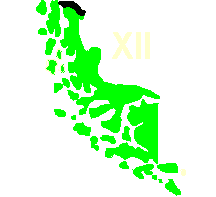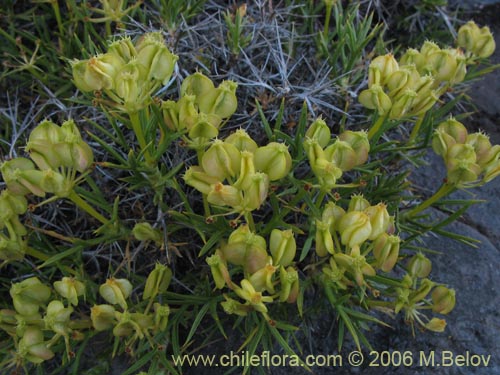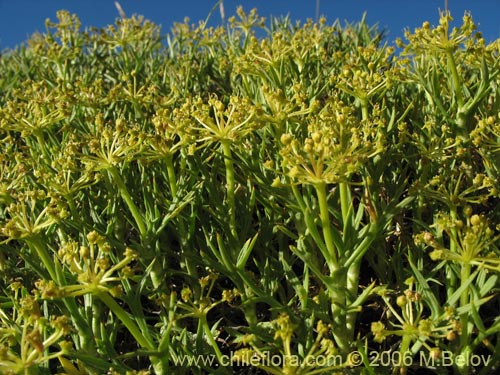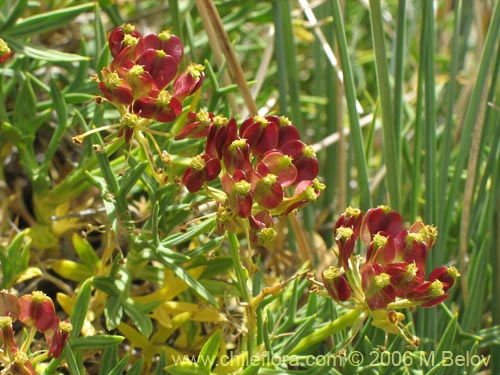|
|

Image of Mulinum spinosum
VII Region, Laguna Maule, Chile
Altitude: 1300-2100 m. 02 09, 2006
|
|
| Species: | Mulinum spinosum (Cav.) Pers. | |
| Family: | Apiaceae | |
| Order: | Apiales | |
| Chilean Name: | Hierba negra , Palo negro , Hierba de la culebra | |
| English Name: | ||
| German Name: | ||
| Russian Name: | ||
| Record: | 0165 |
| About 9 Mulinum in Chile and 2 in our data base. | |
| About 105 Apiaceae in Chile and 45 in our data base. |
  |
|
|
|
|
| Native Very Frequent
Height: 25 cm. Some ornamental value (B) |
INTRODUCTION |
|
Image of Mulinum spinosum VII Region, Laguna Maule, Chile
|
DESCRIPTIONPlant type: Shrub Flower: Yellow, 5 petals Height: 25 cm.
|
|
Image of Mulinum spinosum VII Region, Laguna Maule, Chile
|
HABITATIn Chile this species grows in the following environmental conditions:
Habitat according to altitude: Extreme altitude well beyond the timber line
Watering conditions: Somewhat dry areas where the drought may last 3 - 5 months. Precipitations of 400 - 800 mm. are concentrated in winter.
Light conditions: Fully exposed to the sun. Level areas or slopes facing north.
|
|
Image of Mulinum spinosum VII Region, Reserva Nacional Altos del Lircay, Laguna del Alto, Chile
|
USESSome ornamental value (B)
Useful properties: Medicinal
|
|
Image of Mulinum spinosum VII Region, Radal Siete Tazas, Chile
|
GROWING TIPSThis species has the following hardiness: USDA Hardiness Zone 7, even 6b. The plant tolerates low temperatures (-15° C even -20° C), it can be covered by snow for months (1 - 8 months).
If you are interested in purchasing seeds of this or similar species, please go to our On-line Seeds Shop. |
|
More photos (14) of Mulinum spinosum (Cav.) Pers. available here |
|
More species from the same Apiaceae family in our data base: Azorella lycopodioides (Llaretita) Daucus carota (Zanahoria silvestre) Eryngium paniculatum (Chupalla) Gymnophyton isatidicarpum (Bío-bío) Hydrocotyle chamaemorus (Malva del monte) Hydrocotyle poeppigii (Tembladerilla) Mulinum spinosum (Hierba negra / Palo negro / Hierba de la culebra) Osmorhiza chilensis (Perejil del monte / Anís del cerro) |






